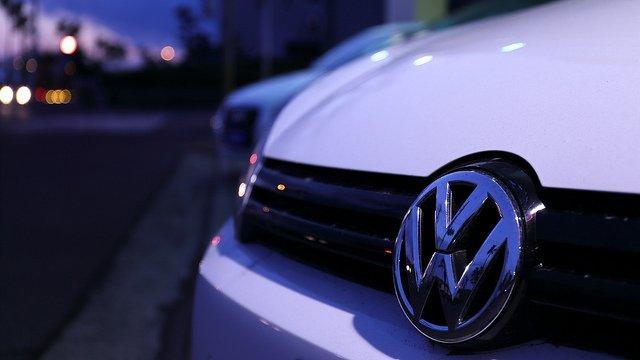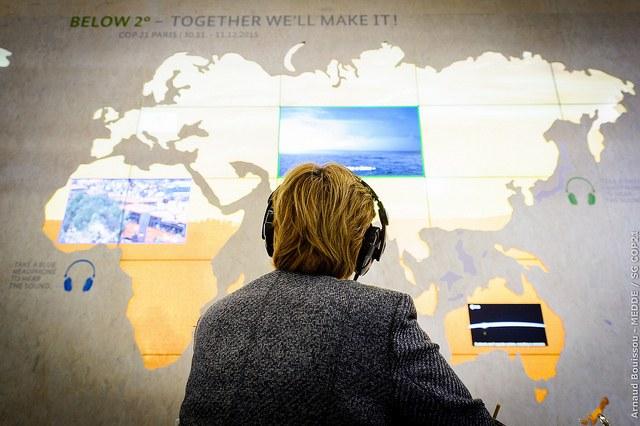Shell Plans to Slash Costs, Jobs to Buy LPG Leader


More than six months have passed since Royal Dutch Shell announced its plans to purchase the energy exploration company BG Group, and the vote is still out as to whether investors will go for the merger.
Earlier this week, after Standard Investments said it would not support the deal and called the plan to purchase the British multinational seller of liquefied petroleum gas "value destructive," the investment company reversed its stance and said it would support the merger.
Standard Investments, which owns stocks in both companies, is among the more prominent 'wins' of investor confidence by Shell in recent months. But many are still skeptical about Shell CEO Ben van Beurden's assurance that oil prices are due to jump substantially in coming months, to the favor of Shell's investment. It has until Jan. 27 to garner the interest of its various stakeholders.
“The oil prices we are seeing today are not sustainable and are going to settle at higher levels, and higher, in my mind, over the next few decades than the low $60s that we require to make this deal a good deal,” Van Beurden told the U.K.-based Sunday Times earlier this week. Oil prices are now at a more than 10-year low, far below the $60/barrel price van Beurden said would be necessary to make the deal worthwhile.
If Shell gets the go-ahead from investors, it says it would slash about 2,800 jobs once the merger is complete, to shore up costs. It also plans to sell about $30 billion in assets over the next few years -- a reasonable step, analysts say, as it prepares to take on more of the liquefied petroleum gas (LPG) industry and deepwater exploration that BG Group has championed.
“Our industry has entered what could be a prolonged downturn,” said Shell Chairman Chad Holliday, in a written statement.
Some analysts see Shell's effort to capture the LPG market as a smart move that will ultimately reduce risk in its current investments. Shell's market value is dropping, an indication, in part, that its oil reserves are declining. Moving toward LPG investment, some analysts say, may raise its value as well as give new life to its brand.
Image credit: Mike Mozart
America’s Second Largest Coal Company Files for Bankruptcy


This is not a good time to be in the coal business. Even before the realization that burning coal is one of the most detrimental things we can do to ourselves could make its unhurried way around the world, the price of natural gas dropped to levels not seen in years. Electrical utility operators, by far the biggest customers for coal, don’t have to be environmentalists to make the switch; it’s a matter of simple economics.
This week, Arch Coal, the second largest coal company in the U.S., filed for bankruptcy, citing $4.5 billion in debt from which it hopes to get relief. St. Louis-based Arch supplies 13 percent of America’s coal, sourced mostly from Wyoming. It is not the first to file, but is following in the footsteps of Patriot Coal, Walter Energy and Alpha Natural Resources, which are all seeking bankruptcy protection.
The announcement claimed that the reorganization won’t affect employees or production, and that no mines will close at this time. Though with production now at a 30-year low, the company acknowledged that it would be hard to rule out “additional steps” in the future, if the market continues to weaken.
Arch Coal operates the world’s biggest coal mine, Black Thunder in Wright, Wyoming, which produced 101 million tons of coal in 2014. That was about 10 percent of total U.S. production.
Ever hopeful, Arch’s chairman and CEO John W. Eaves said in the press statement announcing the Chapter 11 filing: “We are confident that this comprehensive financial restructuring will further enhance Arch’s position as a large-scale, low-cost operator.”
The future of the company seems to rest on the construction of a proposed coal export terminal in Longview, Washington. The terminal, which, if built, would be the largest in the U.S., would require an investment of $680 million. Ambre Energy, a partner in the proposal, has also recently announced financial troubles.
“It’s a clear confirmation that the markets are not seeing any significant upside potential in coal and that the company is fighting for its financial life,” said Ross Macfarlane, senior advisor with Climate Solutions. “The prospect that it is going to raise the $650 million to $1 billion that is estimated is needed to do this project is effectively zero.”
It has become clear that coal will eventually be phased out, starting with those countries that have viable alternatives with natural gas and renewables, such as the U.S. It will likely linger longer in places like India, where supply is abundant and demand is growing quickly.
Responding to the announcement, Jeremy Nichols of WildEarth Guardians said: "There is no future for coal, and it's time for Arch Coal to be honest about this with its shareholders, its employees and the American public who sustain so much of the company's operations."
Nichols joins the chorus of voices urging fossil fuel companies to come to terms with the $2 trillion in stranded assets that must be left in the ground if global temperature rise is to remain below 2 degrees Celsius. Yet, despite the fact that existing reserves already far exceed the amount of carbon that can safely be emitted, the fossil fuel industry spent some $674 billion last year looking for more.
Arch employs 2,100 people in Wyoming and Colorado. A new mine that was supposed to open Montana has faced repeated delays.
Meanwhile, 35,000 solar jobs were added in the U.S. last year.
The slowdown also hurts states. Coal leases in Wyoming, which added over $700 million to the state budget in 2013-14, dropped to $26 million this year.
The North Face Sources Only Cruelty-Free Down


Down can be a sustainable option for filling in clothes and bedding. It can be recycled; it comes from a renewable resource; and down clothing and bedding helps keep people warm which means they can turn the thermostat down. However, it is not sustainable if it is a result of cruel practices like the live plucking of birds.
Some companies are getting that only cruelty-free down is truly sustainable. Outdoor apparel giant the North Face is one of them. In October 2014, the company committed to achieving 100 percent certified responsible down through the collaborative Responsible Down Standard. It achieved the goal one year early. By this fall, consumers can expect to find all down products in stores to be certified by RDS.
The North Face first partnered with the nonprofit Textile Exchange and third party certifier Control Union Certifications to create the Responsible Down Standard: a third-party standard for certified down and feathers. By the end of 2015, over 40 brands had begun to certify their supply chains with the standard. Over 1,200 sites in Europe, North America and Asia are certified, with an estimated 500 million birds covered under the certification. About 240 processors, garment factories and trading units were also certified.
“Down provides the most compressible warmth without the weight, offering superior insulation and comfort,” said Joe Vernachio, global VP of product for the North Face, in a statement. “We’ve been working hard to integrate RDS-certified down across our entire down product line. It took a team effort, and we’re proud to say that now our customers can take comfort in knowing their down products were sourced from the highest quality, responsible down available.”“We’re thrilled to see complete integration of RDS-certified down into The North Face down products this fall,” said Anne Gillespie, director of industry integrity for Textile Exchange. “The North Face has been a real driver in creating the demand that has fueled the momentum we are seeing.”
Taking cruelty out of down production
How bad is animal cruelty among some down producers? Oh, it is bad. People for the Ethical Treatment of Animals (PETA) released an expose in 2012 on down production. What it found, through footage shot undercover, is that employees on goose farms pulled “fistfuls of feathers out of live birds, often causing bloody wounds as the animals shriek in terror.” It gets worse. PETA reported that the “frightened animals are often squeezed upside down between workers’ knees during the painful procedure.”An investigator took a picture of a worker who sat on a goose’s neck to keep the poor bird from escaping. Some of the birds whose feathers are plucked die as a result, and sometimes workers actually stitch the birds’ skin back together, without anesthetics.
Live plucking is not the only cruel practice in down production. Some farmers who raise birds for food, including foie gras, sell their feathers to make extra money. Foie gras means “fatty liver” in French, and to get a goose to have a fatty liver requires incredibly cruel means. According to PETA, workers force-feed geese by pumping grain and fat into their stomachs which causes their livers to swell. Some of the poor birds have trouble standing because their swollen livers cause their abdomens to distend.
RDS certification ensures that down does not come from birds that have been live plucked or force fed. Certification also ensures that the birds have been protected from the time they are hatched until they are slaughtered. In essence, it takes cruel practices out of the down supply chain.
RDS is not the only certification standard. In 2013, Patagonia launched its own standard for down, called the 100 Percent Traceable Down Standard. A year later, the outdoor clothing company had implemented the standard in its supply chain. In 2015, the standard became the Global Traceable Down Standard through a partnership with NSF International. Since fall 2014, all of Patagonia’s products containing down are certified with TDS.
Thanks to Patagonia and the North Face, cruelty in down production is being phased out. That is good news for geese who get to live their lives free of live plucking and force feeding as a result.
Image credit: The North Face
4 Ways Nonprofits Should Market Employee-Matching Gifts


By Adam Weinger
Many donors fail to submit matching gift requests because they're either not aware that corporate giving programs exist or they don't know that their companies offer matching gifts.
The burden of promotion falls to nonprofits, which stand to benefit the most from doubled donations but might not have the funds to launch an expansive marketing plan to profit from some of the best matching-gift programs.
Keep in mind that matching gifts are just a piece of the fundraising puzzle, and they're best employed along with other strategies, such as prospect research or fundraising events.
Individuals contributed over $250 million to charitable causes last year alone, and that number is set to rise in the future. Your nonprofit can only benefit by marketing matching gifts to your donors.
There are many ways to promote matching gifts without breaking the bank. These marketing methods will get matching gifts in front of donors' eyes.
1. Email newsletters
Newsletters are little electronic presents that you send to donors. The emails might not come wrapped up like a Christmas gift, but when newsletters are opened they should reveal desirable contents. Matching-gift information should be part of those contents.
Ideally, you should dedicate an entire newsletter to matching gifts, as the Charcot-Marie-Tooth Association (CMTA) does:
The CMTA does a great job of letting their newsletter recipients know about matching gifts. It provides links to not only its social media sites, but also to more information about matching-gift donations. Additionally, the organization remind donors about what their donations and matching gifts support.
An email newsletter should ideally contain the following elements:
- An explanation of matching gifts.
- A list of companies who supported your nonprofit with matching gifts during the past year.
- Information about specific programs and areas of your nonprofit that matching gifts benefit.
- Matching-gift industry statistics.
- Instructions for matching-gift submission processes.
Remember to provide a compelling call to action, such as the blue button in the CMTA's email newsletter.
Another newsletter option is to allocate a certain amount of space to matching gifts while using the rest of the newsletter to discuss other topics. This strategy means that you can, at the very least, include a matching gift call-to-action as a sort of advertisement on any email.
The National Kidney Foundation provides an example of splitting their newsletter between matching gifts and a separate topic:
The National Kidney Foundation's email does two things at once:
- It educates recipients about the foundation's fundraising goal being reached.
- It tells donors how they can maximize their donations by looking into matching gifts.
The email also provides donors with a link that leads to more information about matching-gift programs.
It's best to dedicate at least one or two newsletters per year to matching gifts, but including some information is better than none. As long as you're putting the option in front of more donors, you should see an increase in fundraising from corporate giving programs.
2. Twitter
All of your tech-savvy donors use the Internet, and most of them are on social media.
Twitter is one of the largest social media sites and is used by many as a news source. Matching gifts can be news, and you want to promote them to eligible donors.
While 140 characters is far from the space that a newsletter provides, it's plenty of room for the necessary call to action, as the Center for Puppetry Arts demonstrates:
If your nonprofit uses Hootsuite or a similar social media scheduling tool, write up a few matching-gift posts and space them out over the next few months. Test out the wording to see what your donors respond to best.
Where does the link in the above Twitter post take a donor? To your nonprofit's designated online location for matching-gift information, of course!
3. Dedicated matching-gift webpage
A dedicated matching-gift page provides resources for donors both to learn how to submit donation requests and to discover if their employers offer corporate giving programs. When donors click on the calls to action in your newsletters and Twitter posts, this is where the links should take them.
A dedicated matching-gift page might look like the one used by Adrian College:
Adrian College effectively uses its dedicated matching-gift page to let donors know what matching gifts are and shares a tool that allows them to discover if their employer offers a matching-gift program.
Matching-gift pages should share relevant information, similar to the topics listed for the newsletter.
4. Direct mail
Solicitation letters are a good way to remind donors to check if their employers match employee donations. While you're asking for donations from supporters, you can also ask them to look into matching gifts.
Thank-you letters incorporate a matching-gift ask into a note that thanks donors for their contributions to your nonprofit. It's important to say thank you first, but once you've established your gratitude, you can then inform donors how they can give twice as much at no additional cost to themselves. Many donors will be receptive to an ask at this time due to their positive emotions.
--
Your nonprofit can make more people aware of both normal and unique corporate giving programs through deliberate and affordable marketing efforts. Whether you're asking for donations for your annual fund or need to ramp up fundraising for your capital campaign, letting donors know about matching gifts is a good way to raise more money!
Image credit: Pixabay
Screenshots courtesy of the author
Adam Weinger is the President of Double the Donation, a company focused on helping nonprofits increase the amount of money they raise from corporate matching gift and volunteer grant programs. Follow Double the Donation on Twitter or LinkedIn.
BASF argan initiative proves economic and social success


As BASF's Argan Programme reaches its 10th anniversary, statistics show that the initiative now benefits 1,000 women in rural Southern Morocco.
The initiative was originally designed to study the argan tree and evaluate the commercial possibilities of its oil and by-products, while diversifying the revenue of the cooperatives and fostering preservation of the argan forest by the local population. For this purpose, BASF partnered with Targanine – a network of six oil processing cooperatives from the region of Agadir.
The oil and its by-products are supplied to the German chemical giant under fair-trade conditions: These include a non-negotiated premium price, payment in advance and a fair trade premium for the oil. Around 50% of the price paid for oil cakes and pulp is allocated to social funds within the cooperatives; so far, this money has been spent on schemes such as literacy programmes and health related initiatives, says BASF.
Between 2005 and 2015, the number of cooperative members involved in argan oil production has increased sixfold and group turnover has risen by 875 percent. Today, 1,000 women from rural areas are working in the cooperatives which now market 16 different products in total, including by-products, botanical and essential oils, and bee products.
Since 2005, three ingredients from the programme have been commercialised, says BASF: an organic and fair-trade certified oil (Lipofructyl Argan), a skin-tightening protein extract from oil cakes (Argatensy), an anti-aging extract from the leaves of the argan tree that protects the skin from environmental factors (Arganyl) and most recently, Argassential.
Lead Poisoning Troubles Link Chicago and Flint, Michigan


Lead has had an insidious role in shaping U.S. health and environmental policies, often to the jeopardy of the country's youngest residents, who are most at risk from lead poisoning. In the 1970s, the discovery that people were inhaling lead from car exhaust brought about the introduction of lead-free gasoline. Almost 20 years later the federal government outlawed lead paints, after a plethora of evidence linked them to health complications in toddlers, including physical and mental disabilities.
This week, the unwelcome chemical element threatens to bring down a state government. The city of Flint, Michigan, population 100,000, has been dealing with water problems since April, 2014, when the state decided to switch its water source to the Flint River to save money. Within days of the switch, residents began to complain of a foul odor emanating from their tap water. Within months, pediatricians reported elevated levels of lead in their young patients. The percentage of children diagnosed with lead poisoning in some sections of the city quickly jumped from 2.5 percent to triple that number. By December 2015, the anticipated number of cases in some zip codes reached 15 percent, Dr. Mona Hanna-Attisha, a pediatrician in Flint, told the Guardian.
Earlier this month, the newly-elected mayor of Flint, Karen Weaver, declared a state of emergency in an attempt to deal with the crisis. Records now suggest that the Michigan Health Department knew there could be a health risk from the new water source. Some researchers suggest the responsibility for the crisis goes deeper than that.
"[The Michigan Heath Department] discovered scientifically conclusive evidence of an anomalous increase in childhood lead poisoning in summer 2014 immediately after the switch in water sources," asserts Siddartha Roy, "but stood by silently as Michigan Department of Environmental Quality (MDEQ) officials repeatedly and falsely stated that no spike in blood lead levels (BLL) of children had occurred."
And unfortunately, Flint isn't the only city that is facing a problem with lead poisoning. Chicago, where the walls in many older apartment buildings and homes are still covered in lead paint, has four times the number of reported lead poisonings than the national average. Although federal law makes it illegal for a landlord or a seller to rent or sell property that could pose a risk of lead poisoning, the problem still persists, with some lower-income areas showing a higher incidence.
And as in Flint, this issue has become political. The Chicago Tribune's May 2015 coverage on the issue suggests that less money is being committed to the cleanup of old buildings than before. Some city departments are closed, while others are receiving less staffing.
"Our elected officials are leaving certain neighborhoods to fend for themselves," Carolyn Vessel, the director of a Chicago-based mental health center. "If they care about the violence, if they care about the schools, they should care about lead."
There is data to back up Vessel's concern. A paper published in Environmental Health in April 2015 links lead poisoning with lower scholastic performance. The study, which focused on Chicago children, was unique because it looked at a large sample of kids and the classic health problems that are faced by children exposed to lead at very young ages. It found that [early] childhood lead exposure is associated with poorer achievement on standardized reading and math tests in the third grade, even at very low B-Pbs. Preventing lead exposure in early childhood is critical to improving school performance.
In other words, Chicago and Flint schools can look forward to a harder time at school and lower test scores for many of its children in future years. But what makes these two stories even more concerning for parents, pediatricians and the cities littlest residents is that according to Dr. Hanna-Attisha, elevated lead levels can only be detected in the bloodstream during the first 30 days of exposure. So those children who may have been exposed months earlier and didn't get a blood test during that period may very well have gone undiagnosed. And that's a problem, notes Mother Jones writer Kevin Drum, we have already seen and should know better than to repeat.
Images: 1) Tam Tam; 2) toadbarracuda
The VW Scandal Continues: Implications for Corporate Social Responsibility


By Shuili Du and Deborah Merrill-Sands
Over the last decade, corporate social responsibility and sustainability has occupied a prominent place on the global corporate agenda, with an ever increasing number of corporations engaging in responsible and sustainable business practices to create social and business value. Nevertheless, from Nike’s sweatshop crisis in the 1990s, ethical controversies of Walmart in mid-2000s, to BP’s Deepwater Horizon oil spill in 2010, and now Volkswagen’s emissions scandal in 2015, we see that every few years a severe, high-profile corporate ethical scandal occurs, capturing the attention of the media and damaging the public’s trust in the corporations and their social accountability.
On Jan. 4, the U.S. justice department sued Volkswagen in federal court, questioning Volkswagen’s efforts to restore its credibility and accusing the company of impeding and obstructing regulators’ inquiries and providing misleading information. Back in December 2015, Volkswagen characterized its emissions scandal as a "chain of mistakes," which is a gross understatement. The company has equipped a staggering 11 million diesel cars since the 2009 model year with software – called a “defeat device” -- used to cheat on emissions tests; when not being tested, the cars emit up to 40 times the allowable levels of nitrogen oxide pollution. This emissions scandal is a disturbing case of systematic corporate fraud that has harmed customers, governments, and the health and well-being of citizens in the societies in which Volkswagen has been given the license to operate.
The effects of such corporate crises are profound and lasting. Volkswagen’s market value dropped by 23 percent in September 2015, after admitting diesel emissions cheat. The company's sales in the U.S. declined almost 25 percent in November 2015 alone. The estimated total cost of the scandal is projected to exceed $8 billion. Much more difficult to estimate are the invisible and long term damages to the company, such as the negative impact on brand trust and reputation, customer satisfaction, employee morale and loyalty, and investor confidence. Trust, once lost, is notoriously hard to regain.
Even more importantly, there is an externality effect. Deceptions such as those perpetrated by Volkswagen not only tarnish the reputation of other automakers and even corporations in unrelated industries, but they also undermine the public’s trust in the business, and heighten consumers’ cynicism about greenwashing – and now greenfrauding.
It is yet to be seen if Volkswagen can salvage itself from the scandal. Its actions to date in handling this scandal are far from adequate. If history is a mirror, Volkswagen should draw lessons from companies that have encountered similar crises in the past. For example, Nike witnessed public outrage and massive consumer boycotts against its sweatshop labor practices in 1990s, and ever since has executed one of the greatest image turnarounds. Nike established and reinforced a code of conduct for labor practices, hired external professionals to audit its suppliers, and increased transparency of its labor practices by detailing its performance in its annual corporate social responsibility reports. Indeed, Nike has been applauded for its leadership in partnering with independent industry organizations, such as the Fair Labor Association, to foster industry-wide changes in building sustainable supply chains.
If Volkswagen is to succeed in resurrecting its image, it should act decisively. It needs to accept full responsibility as an organization, not as a constellation of individuals, for its emissions scandal. It has to lay out a credible plan for how it will truly reduce emissions and verify its compliance with regulatory standards. It needs to counter its stigma by making significant, long-term R&D investment to position itself as a leader, rather than a laggard, in technology development to reduce emissions while enhancing performance. And, it needs to establish stronger accountability structures and practices, as well as fostering positive changes in its corporate culture, to hold the short-term profit motive in check and prevent any future fraud.
Volkswagen gives us a stark lesson in how businesses should (not) approach social responsibility and sustainability. Deceiving stakeholders by paying lip-service and treating sustainability as façade is never going to deliver true value for the company nor for society. Indeed, as we have seen, it engenders significant costs. Research shows that business value is created when social responsibility and sustainability are embedded in the company’s culture and core business strategies. When done right, companies benefit from a more favorable corporate image, greater customer loyalty, higher employee morale, and enhanced organizational learning and core competence. And, in turn, societies benefit from harnessing the power and resources of corporations to address pressing social and environmental challenges.
Image credit: Keita Kuroki
Dr. Shuili Du is a marketing professor at the Peter T. Paul College of Business and Economics, University of New Hampshire. Her research expertise lies in understanding various ways corporate social responsibility (CSR) and sustainability initiatives create business value. She has published research in many premier journals and has consulted to various corporations on their CSR and sustainability strategies.
Dr. Deborah Merrill-Sands is Dean of the Peter T. Paul College of Business and Economics at the University of New Hampshire. Trained as an anthropologist, she is an expert in diversity and women and leadership. She has worked in the area of socially responsible business for the past 10 years. Prior to her career in academic administration, she worked internationally as an applied researcher on issues of food, poverty, and economic development.
COP21, One Month Later: Tech Innovations for Buildings and Cities


By Dan Probst
The COP21 agreement, signed one month ago today, is great news for building technology innovators and their customers. The consensus is that the global agreement will accelerate research, development and investment in green technology and sustainability gains for a range of sectors, including commercial property.
The landmark climate change conference in Paris included the launch of the first Buildings Day on Dec. 3 and the launch of a new Global Alliance for Buildings and Construction, an initiative designed to spur widespread adoption of today’s best policies and most efficient building materials, designs and technologies around the world.
The implications were obvious to anyone who toured The Gallery, a three-day COP21 showcase for new technology to reduce greenhouse gas emissions in the real estate, industrial and transportation sectors. Clearly, private investment in clean energy and other core sectors in terms of both infrastructure and related technologies will continue to be absolutely essential to meeting global 2030 ambitions. The exhibition included a long roster of companies in the building and construction sectors.
One product that caught my eye is a packaged unit that maintains a continuous supply of electricity from intermittent renewable sources (such as wind and solar) though a combination of batteries and a hydrogen fuel cell. Other interesting finds involved using tree leaves to harness wind power, a turnkey solar building and new kinds of building insulation. Other technologies on display include new smart-building and smart-city technologies, advanced lighting controls, and solar power integrated into roofing materials, windows and curtain walls.
During the exhibition, U.S. Energy Secretary Ernest Moniz said that innovation and new technology advancements enabled countries to come to Paris with strong commitments for emission reductions that were inconceivable just a few years ago. Recognition of the role that technology and innovation can play has also led to investment commitments from Bill Gates and others.
These commitments rolled in, despite estimates from the U.N. Environmental Program that the annual corporate cost of climate adaptation will be in $150 billion to $300 billion range by 2030. In fact, the role of business in combatting climate change was undeniable at COP21.
For instance, U.S. Secretary of State John Kerry characterized COP21 in Paris as “the most extraordinary market opportunity in our history that will stimulate huge investments in clean energy technology.” Fatih Birol, executive director of the International Energy Agency, pointed out that renewable energy is quickly becoming a viable alternative, with 50 percent of all of new power capacity added globally in the past year coming from renewable energy. He also observed that energy efficiency is part of the solution, a particularly relevant point for buildings — and corporations seeking to reduce costs.
Buildings are only part of the solution, of course, but improving building energy efficiency and access to renewable energy will make a significant contribution to reducing greenhouse gas emissions. The hope is that the COP21 agreement will spark continued investment in building technologies to further this goal.
Image credit: Flickr/COP21
Dan Probst is Global Chairman of Energy and Sustainability Services at JLL. In this role, Probst and his team develop and deliver products and services that help clients reduce energy costs and their real estate-related environmental footprints through innovative portfolio and occupancy strategies, workplace standards, and operating practices. Probst is a founding and current member of JLL’s Global Environmental Sustainability Board.
The Pro-Life Argument for Climate Action


By Jamie Beck Alexander
The fight against climate change is a fight for life. Reproductive rights aside, we are all pro-life in the sense that we want the healthy, vibrant continuation of life on Earth. Yet a large swath of the American public still feels disconnected from the historic climate change commitments made a month ago in Paris. And political obstacles abound, with all of the U.S. Republican presidential candidates vowing to repeal the climate commitments made by President Barack Obama. Refocusing the climate change conversation on life as the reason we’re fighting will serve to bridge the political divides that have impeded our progress, broaden the community of people who care about climate change, and mobilize a new group of climate change warriors: mothers.
Mothers are the embodiment of life. We provide sustenance for our young just as the Earth sustains life in all forms. This life-giving power cuts across political, geographic and socioeconomic lines. To mobilize mothers is to tap into a group of people that, wherever we live and whatever we believe, have life-giving and life-sustaining in our DNA. There is enormous bipartisan potential to be unlocked in the reframing of climate change as a maternal issue.
Since the beginning of time, mothers have looked into the eyes of their children with infinite hope for the future. But today, looking into the eyes of one’s child is also a call to action. Because we now know that in order to prevent catastrophic, human-caused climate change, we must act. The world we want for future generations is possible only with major effort on our parts, including taking individual and collective action and holding our governments and businesses accountable. We now know that we must fight for the future we want for our children.
This idea is second nature for most mothers, who inherently possess a fierce instinct to fight for our young. In the words of Ceres Executive Director Mindy Lubber, “I would throw myself in front of a bus if it were coming at [my daughters]. We all need to throw ourselves in front of this bus called climate change.” These protective instincts are crucial for the climate change fight. The battle will be long, and affirmations to continue the fight will need to be made day after day. The actions we will need to take to exceed the commitments made in Paris may not always be easy or logical, so relying on scientific evidence alone to motivate us will fall short. The movement needs the emotional, instinctive leadership abilities inherent to many mothers to sustain it, to remind us of what we’re fighting for when the obstacles seem insurmountable. Logic may not tell us to jump in front of a bus, but maternal instinct will.
At every level, mothers are taking this inspiration they find in their children and using it as fuel for their work. Christiana Figueres, the United Nations' climate chief who was instrumental in reaching an international agreement in Paris, has said that her deep passion for climate change work did not fully develop until her two daughters were born. Marshallese poet and climate change activist Kathy Jetnil-Kijiner wrote a poem to her young daughter that brought world leaders to their feet at the 2014 Climate Summit. She also co-founded a nonprofit organization to educate youth on environmental issues. In Bangladesh, Rajena Boiragi supports women to start their own small businesses, enabling their families to be more resilient to climate change impacts. In Massachusetts and New York, hundreds of mothers are mobilizing their communities through Mothers Out Front, an organization that mobilizes mothers and grandmothers for a clean energy future. And, through the work of the Environmental Working Group (EWG), mothers are increasingly making healthier buying decisions for their households and the planet.
To acknowledge climate change as a human life issue, regardless of religious or political affiliation, is to bridge political divides and broaden the base of people who will act. “Pro-Lifers“ would be proud to fiercely support the climate change fight as it seeks to protect life on the grandest scale. And to value the instincts and leadership abilities of mothers is to inject the movement with a new and lasting vigor that will sustain the fight from generation to generation.
Life is the reason we’re fighting. If we remind ourselves of this, there is little that we won’t do to ensure its vibrant continuation.
Image credit: Flickr/COP21
Jamie Beck Alexander is a CSR and sustainable development consultant with clients including the U.S. Agency for International Development (USAID) and the design firm IDEO. Her work has focused on bringing a human-centered design perspective to international development and climate change resilience projects. Her son and the inspiration for this piece, Akiva Sagan Alexander, was born in June 2015.
How Millennials Are Leading Change in the 21st Century


By Nick Gower and R. Paul Herman
Millennials are earning a reputation for doing things differently. They communicate intensively using social networking (Facebook, Twitter, Pinterest), are revolutionizing the transportation (Uber, Lyft), and now they are demanding sustainable business and accountability. Currently the largest living generation in the United States, millennials have their ‘buying power’ to throw their weight around.
But this innovation doesn’t happen by chance or because millennials passively expected it, but rather because they advocate for themselves and want to create it.
How are millennials sparking innovation? The old-fashioned way: by speaking up and leading the way. At Sustainable Brands, Tamay Kiper is a content manager and trained engineer. Kiper chose to take her talents to Sustainable Brands because she believed in its mission to accelerate the shift to a sustainable economy. When Kiper began investing in her 401(k), she realized her investments were not necessarily in line with her values, so she spoke up.
Kiper's investment plan administrator explained that although he had focused on providing fiduciary responsible investment options, he did not know the social or environmental impact of those funds. So, Kiper recommended that the firm work with a sustainability ratings-firm to create impact scores for mutual funds and ETFs. The goal was not only to rate for financial performance, but also to identify future risks from human, social and environmental factors in a changing marketplace.
Take fossil fuel companies like Exxon or Chevron for example, which are currently valued based on the oil and gas reserves. When major fossil fuel companies extract all of their fossil fuel reserves, the global environment would be drastically deteriorated. This scenario doesn’t seem possible, and those reserves don’t seem like assets. These firms could be overvalued and overpriced. Hence, Kiper and her peers can now allocate their 401(k) investing in a more sustainable manner.
In a similar fashion, Mark Bresnahan, a millennial at the ripe age of 31, is a product manager at Fourstar Connections. Bresnahan is energized by sustainability, and wants his employer, a design and manufacturing firm, to benefit the environment and profit at the same time. As chairperson of the Environmental Committee at Fourstar, Bresnahan’s leadership – with expertise from Joy Pettirossi-Poland, creator of the More Value and Profit (MVP) Program – is helping Fourstar gain competitive advantage and engage employees. One of those initiatives was sparked by evaluating their 401(k) on sustainability, which has helped spread the Carbon Disclosure Project (CDP) reporting, as well as expand conversations with Fourstar’s customers about environmental impacts.
Bresnahan explains: “My generation feels a responsibility to not only have a net zero impact on society, but create an environment where people and businesses are a force for positive change. Evaluating our 401ks for sustainability empowers us as individuals to put our money to work. Investing this way can benefits society, reduce our future risk, and enahnce our potential for future returns."
Leadership comes at nonprofits too. As You Sow is a shareholder advocacy organization that has made major progress campaigning for citizens and society, including fossil fuel divestment. However, As You Sow’s employees realized that their 401(k) plan options were invested in the fossil fuel companies they were campaigning against. As You Sow prototyped a tool with our firm HIP Investor to identify mutual funds and ETFs that do not hold fossil fuel producers. A new free, online tool – FossilFreeFunds.org -- allows users to search across more than 1,500 mutual funds from their portfolio or retirement plan to see if their portfolios are fossil free.
Mission based organizations are attracting millennials. Environmental Building Strategies advises Fortune 500 companies and organizations of all sizes on how to improve their real estate, offices and human workspaces. Yet EBS’s 401(k) could be more sustainable. Graduates of the Presidio Graduate School MBA program, it was natural for business partners Burke Pemberton and Matt Macko – both millennial entrepreneurs – to ensure the firm was 100 percent sustainable. Working with Communitas Financial and HIP Investor more than 2 years ago, EBS now shows the sustainability profiles of the mutual funds in the 401(k). Now, 100 percent of staff invest in their 401(k).
To build a better world, EBS project manager Kristen Magnuson suggested the next innovation – offering Fossil Free portfolios in the 401(k). Magnuson was inspired at the Bioneers Conference where she experienced systems change this way:
“One person at a time, caring deeply about something, and taking a special interest in it, then speaks up, making sure their voice is heard. By taking action and doing something, figuring it out, leads to small victories, and possibly big ones. Then in discussing both successes and failures, trying again.”
So when she returned to EBS the next week, Magnuson suggested this new innovation. “Let’s make this happen; If it's not an option, I want it to be created.” Pemberton and Macko welcomed the innovations, as did Communitas and HIP, to push investing to the next level. “Red tape changed color and POOF! Here were are: multiple portfolio options for different risk-appetites, and all fossil free! One of the happiest days of my life.”
Top employers stay that way by listening to all employees, engaging them, and unleashing their innovations. The best and the brightest employees want to work for those firms. Now more than ever, millennials “want more from business than might have been the case 50, 20, or even 10 years ago,” says Barry Salzberg, CEO of Deloitte Global.
And hiring the best employees to your team is only the first step. In order to be engaged and working to their potential, employees need to feel heard and acknowledged. Employee satisfaction can be highly correlated with corporate performance. See here how Fortune’s 100 Best Companies to Work For, compiled by Great Place to Work Institute, has outperformed the S&P500 and Russell1000 from 1997 to 2014.
Whether you are innovating on the front-lines of your organization, or engaging your workforce as a manager or HR leader, or learning about your own 401(k), you have the power to build a better world – that can seek both human, social and environmental impact as well as potential profit.
Now is you’re time to speak up. You have the tools and you have the power.
===
To learn how you can more deeply engage employees via your 401(k) program, join these webinars:
On Thursday Jan. 14, leaders from As You Sow, EBS, HIP Investor and the MVP will show how companies can engage employees, and improve their 401(k) offerings for staff: Sustainable, Fossil Free 401(k)s: a How To Guide
And on Friday, Jan. 15, HRO Today, HIP Investor, and MVP will present: How To Attract Talent and Increase Engagement Through your 401(k)
Image credit: Pixabay
Nick Gower is a manager of impact investing analytics + client relations, and R. Paul Herman is CEO of HIP Investor (www.HIPinvestor.com), which rates 13,500 securities globally on Human Impact + Profit, and serves investors, advisors, fund managers and retirement plans with ratings and model portfolios.
Disclosure This information is for education purposes and do not constitute an investment recommendation. Past performance is not indicative of future results. All investing incurs risks. This is not an offer of securities.